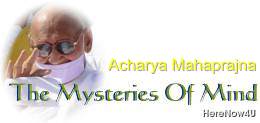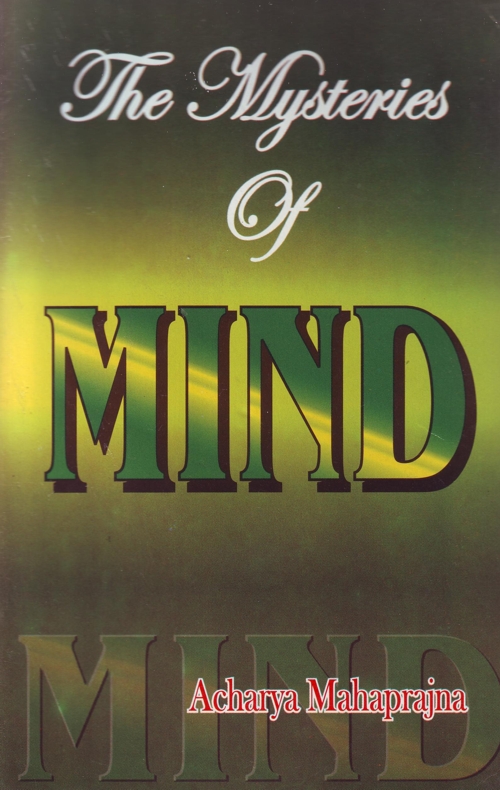
The beating of the heart and the circulation of blood and air in the body keep it working like a huge factory. And we remain unconscious of what is happening in the body. The reason for this is that we are incapable of seizing the sensations. It is only when we watch very carefully that we are able to see how much the body is seething and throbbing with activity. It is only when we perceive the body that we come to know that the pulse and the heart are beating and that the blood is circulating in it. Our minds have become so gross that we are unable to comprehend subtle things. We can comprehend subtle entities through the subtle mind only. Sadhana consists in refining the mind and making it subtle. The more the mind becomes refined and subtle, the nearer shall we arrive to our subtle being or existence. Grosser sensations will then disappear and we shall be in a position to comprehend more subtle or finer sensations.
What is the consequence of comprehending the mind? It results in selfdiscipline. We have chosen a path, which has no footprints. There is no question of following and imitating anyone. Once our walking has gathered momentum, we will begin to command a comprehensive and disciplined orientation or vision. The mind will then stop wandering about outward things. It will fix itself on one point only and a one-pointed consciousness will emerge. That is self-discipline.
Our journey is a very short one. Let us not be apprehensive. The journey as well as the distance we have to cover is very short. They appear to be long and arduous only so far as we do not see things in the correct perspective. Ordinarily we do not know how to see.
The journey is short and the goal you have to reach is that state of your being in which you have simply to perceive and know and to do nothing else. In other words you become a perfect seer and knower. With the achievement of this state, your journey will come to an end. Yours is a short road, a short journey and that too in a single vehicle, which is the current of the vital force in you.
We live between two entities, the state of being a knower and a seer and the taijasa body or the current of the vital force. When the current of the vital force begins to flow in a direction against the state in which the practitioner feels himself to be a knower and a seer only and nothing else, his journey and the road on which he travels become very long and the distance which he has to cover becomes longer and longer. He becomes overwhelmed with one obstruction after another. He comes to feel as if he is lost in darkness and sees no ray of hope anywhere.
King Bharata sent his envoy to Bahubali with the message: "You live in Taxila and I in Ayodhya. There are hills, forests, rivers and many more things between us. We live miles apart from each other. All these are immaterial because we do not have a talebearer between us. In the absence of such a person we are nearer to each other although physically we are miles apart.
If there is nothing between the soul as a knower and spectator par excellence and the current of the vital force to disturb both, there will be no distance between the two. If delusion or attachment intervenes, they will stand apart and the current of the vital force will begin to flow in the opposite direction.
Existentialism as well as spiritualism imply two things: One is knowledge-perception and the other is energy. The former cannot come into operation without the latter. According to the Kamakastra, knowledge and perception cannot be acquired until the effects at antaraya karma (obstructive karma) have been completely washed off. Knowledge and perception in their purest forms do not operate in a relational context. They are absolute. Even when the effects of actions which by their very nature delude knowledge and perception have been eradicated, right knowledge and right vision are not possible until the energy released by the cessation of antaraya karma (obstructing karma) has been amalgamated into the process of knowledge and perception. Without this amalgamation the eyes cannot see, the ears cannot hear and the mind cannot think. The mind becomes deranged as a result of the absence of energy in the brain. If the vital energy has been cut off from the brain-centres connected with the organs of perception, even an otherwise healthy eye will not work. And this is true of all the other sense organs as well as of the mind. Paralysis of a particular part of the body means that the circulation of blood in that part of the body has ceased. Cessation of the circulation of blood means cessation of the flow of vital energy. That part of the body in which the circulation of vital energy has stopped becomes inactive. Knowledge and perception become dissociated with vital energy. Before the delusion, which clouds knowledge and perception, has been removed, they must first be rescued from antaraya karma (obstructing karma). Energy is generated only on the cessation of antaraya karma. There can be no activity without vital energy.
The most important thing to be considered is the direction in which energy is flowing. If the direction is wrong, it has to be changed. Without this there can be no transformation of personality. Every one would like to transform himself, but this transformation is not possible without changing the direction of the flow of vital energy.
Religious scriptures and the acharyas (religious leaders) did not expound the principles of religion, sadhana and yoga as mere exercises in metaphysical thinking. Some people believe that religion and philosophy have only interpreted it instead of attempting to change it. This is evidently a wrong view. Sadhana, which does not attempt to change life, cannot be acceptable, for in such a case the philosophy of religion cannot claim to be a spiritual philosophy in the true sense of the term. Here I am not talking of changing the social system. Spiritual philosophies were perhaps not meant for changing the world, least of all the social system. And yet it cannot be asserted that spiritual philosophy is not capable of changing the life of the individual. It does bring about a new orientation in man's thinking, which results in the transformation of his personality and nature. This transformation is so complete that the person transformed begins to wonder if he is the same person he was earlier or if his body has been possessed by a new spirit.
The distance we have to cover in our journey is a short one. The tail end of our journey is the state of being a seer and a knower. This state can be achieved by diverting the current of the vital force towards it. There is no other means of achieving this end. What we have to do during the journey is to understand the nature of vital energy and how to divert its course.
There are some who do not desire to achieve this end. It does not seem to be attractive to them. They desire to have health, longevity, joy and peace of mind. Every one who lives in a society desires to be healthy and to live a long life. He knows that he is going to die one day, but he would likely postpone death for so long as it is possible. At the same time he does not like to live a life of misery. He likes to live comfortably and peacefully. But can he have peace without being wise? Is it possible to live a long, healthy and comfortable life without the peace of mind? No, it isn't. The path of such people is the reverse of what we have prescribed. The order of their preference is health, longevity, comfort and peace.
But they will have to reverse the order of their preference. Peace will come only through discernment, comfort through peace and longevity and health through comfort.
Viveka (discernment) means to analyse, to separate. It implies the rejection of the idea that everything is like everything else. We will have to understand the path we are treading carefully in order to understand discernment.
 Acharya Mahaprajna
Acharya Mahaprajna

